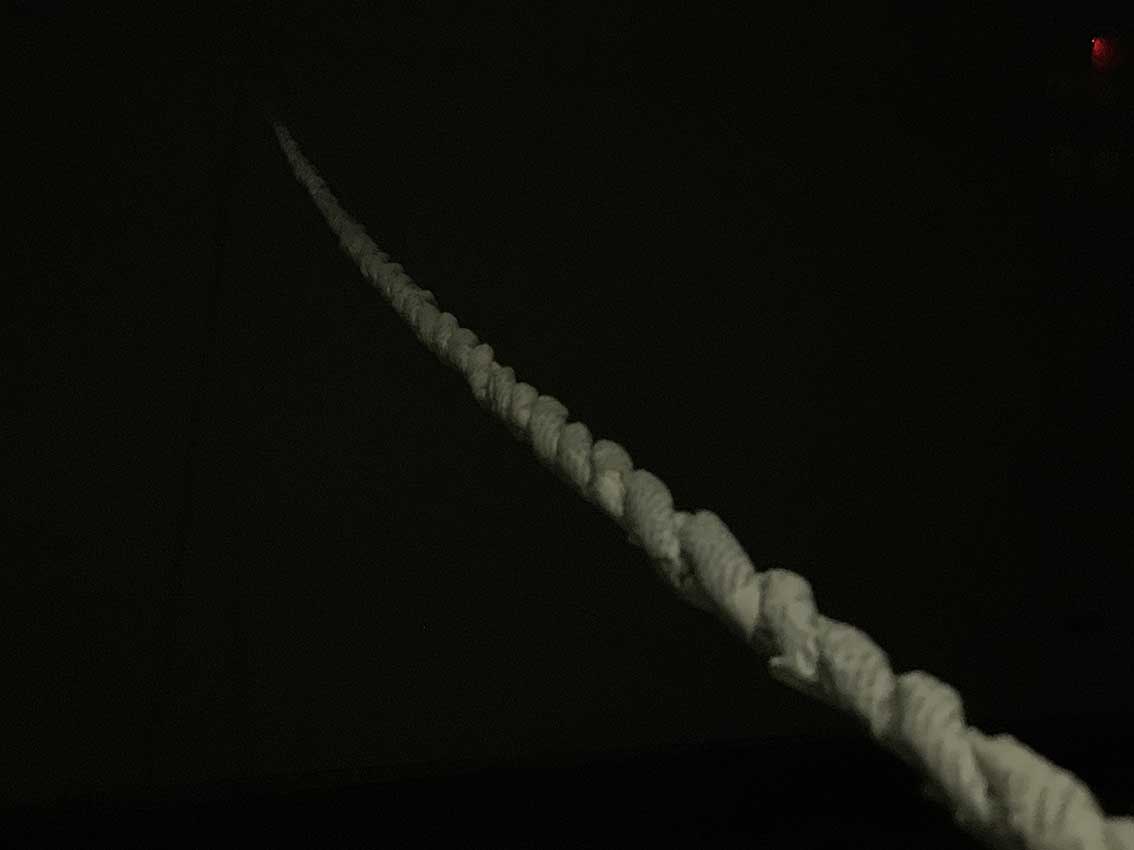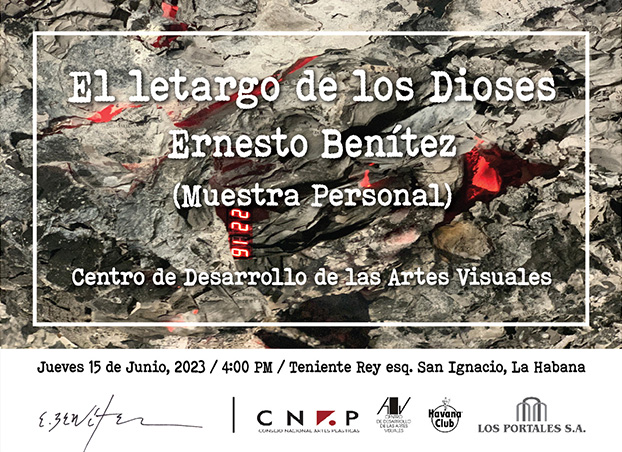The Lethargy of the Gods (Center for the Development of Visual Arts) CDAV, Havana.
(Immersive multimedia installations with digital programming for Arduino UNO, lighting and sound).
Personal Exhibition shown in one of the most important spaces of Contemporary Experimental Cuban Art in Havana, Cuba.
June 15 to July 27, 2023.
Censorship: Paranoia and Dictatorship of the One Thought
Beyond human religiosity as an anthropological trait that defines him, ideologically, the human being has always been enculturated to worship, to surrender unconditionally to any cause that is imposed on him as transcendental and/or of greater scope than his limited and miserable immanence. His capacity to worship is not exclusive of a religion, it implies a susceptibility, an openness that can be aligned with that which is instilled in us as the meaning of life…
Censorship and Ideological Fundamentalisms
In such a context, this is a project that speaks of theocracies and ideological fundamentalisms; of politics and, above all, of political power based on magical thinking that responds to unquestionable religious dictates.
From decadence and asthenia, this project evokes a form of political religion underhandedly imposed, conceived not to guide and give meaning to collective efforts, but to blur and redefine at will the values of a society, lulling, numbing, anesthetizing consciences and diluting individualities from the most absolute control. Thus, this project alludes to a theocracy based on the most dogmatic faith and questions, in short, the political authority exercised by a sacrosanct priestly caste specialized in fabricating enemies, sowing hatred and alienation.
Minimal Stories-II (The Great Abjection)
Ernesto Benítez reserves for this exhibition two minimalist installations based on new technologies. Two immersive environmental installations that question the tyranny of single thought:
On the one hand Minimal Stories-II (The great abjection) 2023, is an environmental installation conceived from a digital programming for Arduino UNO with seven RTC electronic devices with LED screens and digital printing mounted on the ceiling of the exhibition hall. A work that traces a virtual mapping of the history of censorship based on seven stations. Prison, exile, scorn and social exclusion, ostracism or death have been and are the destinies of many thinkers throughout the history of mankind, whose heretical crime may have been, in any case, to think outside the official discourse; to question, disagree or dissent.
Their postulates, their theories -of whatever kind- have constituted and still constitute, even today, a simple and crude excuse to remove individuals who are a nuisance for their ideas… and indeed; there we have, for example: the death penalty to Socrates in 399 B.C.; the condemnation for heresy of William of Ockham in 1327; the burning at the stake of Giordano Bruno in February 1600; the excommunication of Spinoza in 1327; the excommunication of Spinoza in 1327; the burning at the stake of Giordano Bruno in 1600. C; the condemnation for heresy of William of Ockham in 1327; the burning at the stake of Giordano Bruno on February 17, 1600; the excommunication of Spinoza in 1656; the poisoning of Nicolas de Condorcet in 1794; the exile and subsequent suicide of Walter Benjamin in 1940, the persecution in the United States of alleged communists accused by Joseph McCarthy of subversion or treason (1950 to 1956) or the ostracism and censorship of Virgilio Piñera, Lezama Lima and many other intellectuals in our country since 1961? Well, this work makes a solemn review of the most important ones.
Soundbite (On the ‘Tightrope’ without Red)
On the other hand, Soundbite (On the ‘Tightrope’ without Red), 2023 is an environmental multimedia installation made with electronic audio devices and paper, inspired by the phenomenon of string theory[1] and The String of Life, a Buddhist tale. The work itself is a tightrope of more than 11 meters long, whose core has been braided in toilet paper and pulp from Heisenberg’s The Uncertainty Principle, covered with personal documents, historical documents and philosophical clippings (from Plato, Aristotle, St. Augustine, Thomas Aquinas, Descartes, Marx, Heidegger, Nietzsche, Foucault). It is set, internally, with vibrations, distorted sounds and fragments of historical speeches edited on the leitmotiv of The Ride of the Balkirias, taken from The Fall of the Gods, monumental Wagnerian opera that closes the tetralogy The Ring of the Nibelung, a heroic and mythological story with which the German intellectual questions the decadence of the iron political model established in Europe as a consequence of the 1st Industrial Revolution (16th-17th century). XVI-XVII).
Mythical Archetype of Narcissus and the God Complex
As a contribution to the study of the narcissistic and messianic personality, Ernest Jones introduced in 1913 the expression “God complex” which, although it is not a clinical term, sociologically is usually used to describe the megalomaniac and egomaniac tendencies typical of iron models of leadership based on a strong charge of authoritarianism which, appealing to all technological availability, increase their panopticism and reinforce the control they exercise (distortion through) over the flow of information to annul or repress any dissenting behavior.
Lie or Deception (Emotive Statements and Communicative Biases)
Thus, the exhibition The Lethargy of the Gods, ultimately, establishes an ironic counterpoint between the explicit character of absolute indubitability that governs the Cartesian Principle of Apodictic Evidence and the freedom to discern, disagree and dissent in a world governed by emotive statements and the heuristics of communicative biases, always folded to the media and propaganda machinery of the darkest ideologizing powers here and there. The exhibition as a whole proposes to oppose critical thinking as the discursive basis of the Humanistic Sciences, with its sublime legacy of reflection and dialogue, to the despotic totalitarianism of the dictatorships of the single thought and the always providentialist character of their dogmatic rhetoric.
Against Censorship: A Dramatic Homage to Fear
The Lethargy of the Gods could be read, then, as a dramatic homage to fear, since it alludes to the reticence of old gods, drowsy and narcoleptic, full of rancor and hatred, capable of anything, at any price, to remain in power without losing the kidnapped faith of their idolatrous parishioners?
Notas:
[1] String theory (one of the theories that offers the greatest prospects of unification to cover and which, paradoxically, has caused more splits among scientists in the world, even generating schisms with various antagonistic factions within the same line of research) does not cease to be, In my opinion, it is extremely striking and illustrative of the paranoid efforts to cover, at all costs, the undemanding expectations of a society that is always “open” to whatever comes along, and it is also a paradigmatic example of the tension and deep ideological polarization that characterize us as a post epoch.



